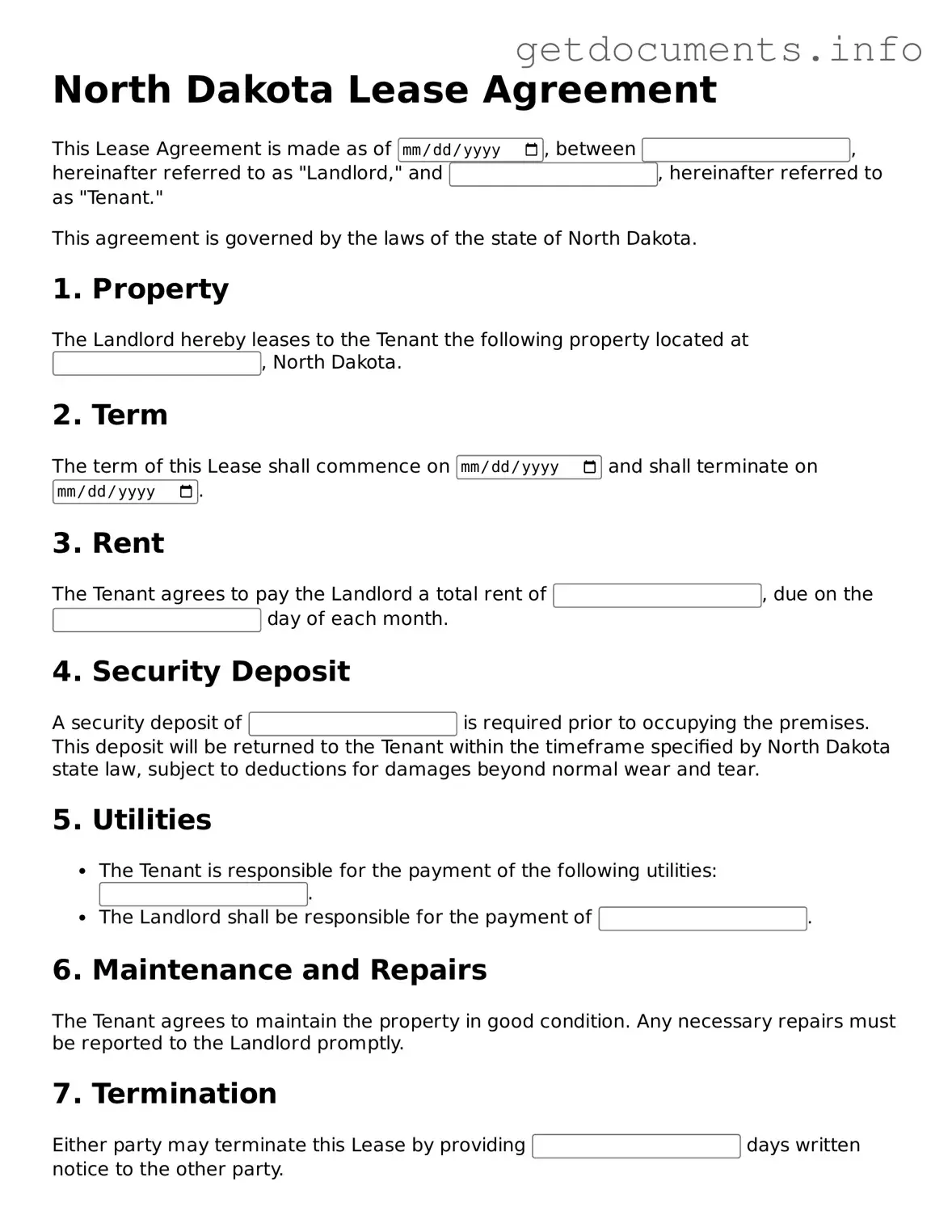In North Dakota, the Lease Agreement form serves as a crucial document that outlines the terms and conditions between landlords and tenants. This form not only establishes the legal framework for the rental arrangement but also clarifies the rights and responsibilities of both parties involved. Key aspects of the Lease Agreement include the identification of the property being rented, the duration of the lease, and the amount of rent due, along with payment methods. Additionally, it addresses security deposits, maintenance responsibilities, and conditions for terminating the lease. Understanding these components is vital for anyone entering into a rental agreement, as they help prevent misunderstandings and disputes in the future. Furthermore, the form may include provisions related to pets, utilities, and any restrictions that may apply to the use of the property, ensuring that both the landlord's and tenant's expectations are clearly defined and agreed upon.
